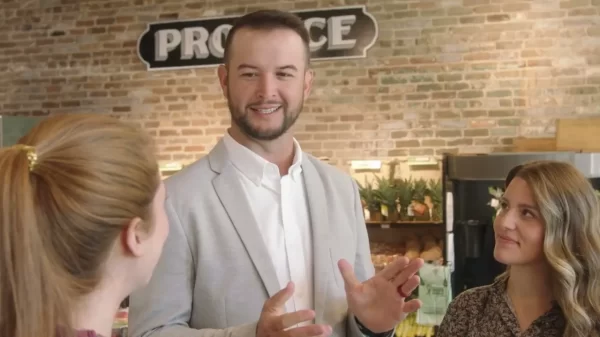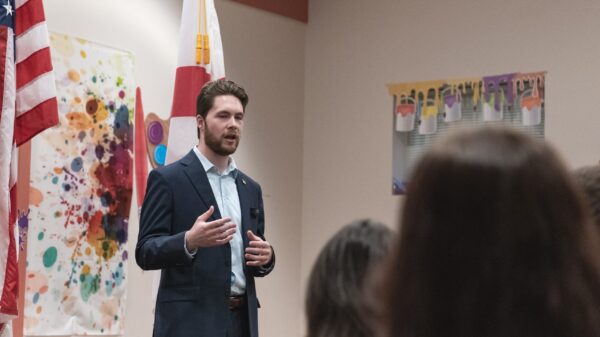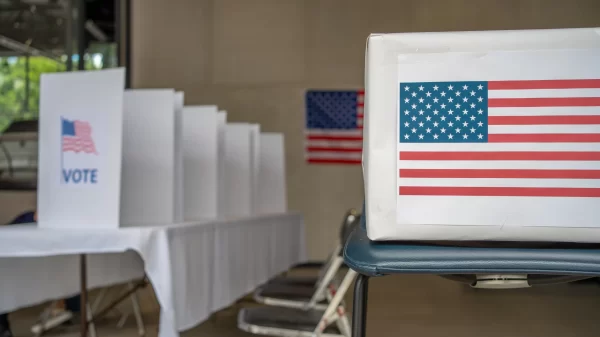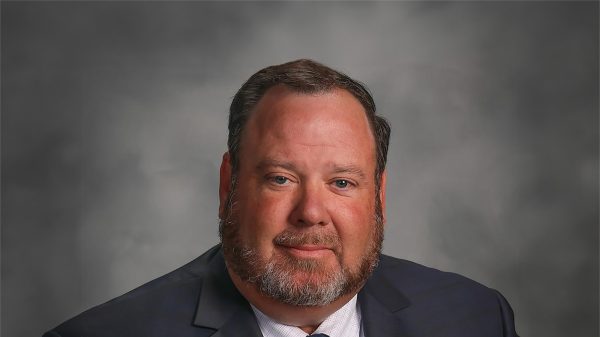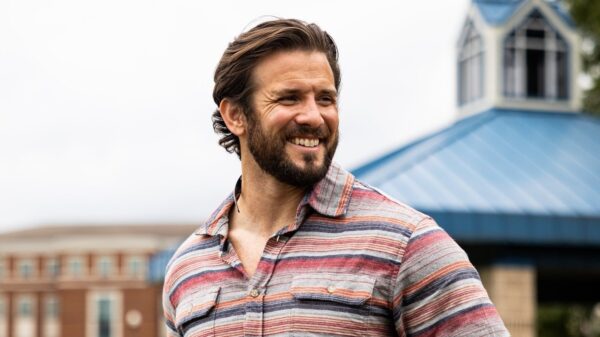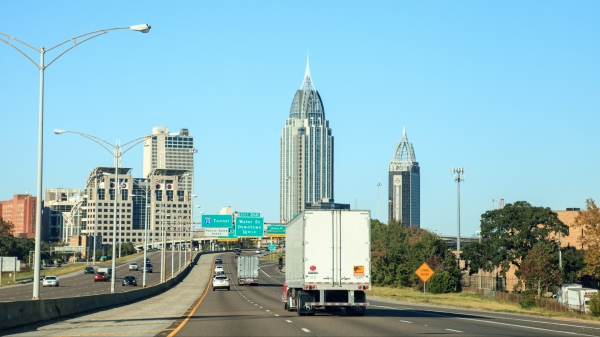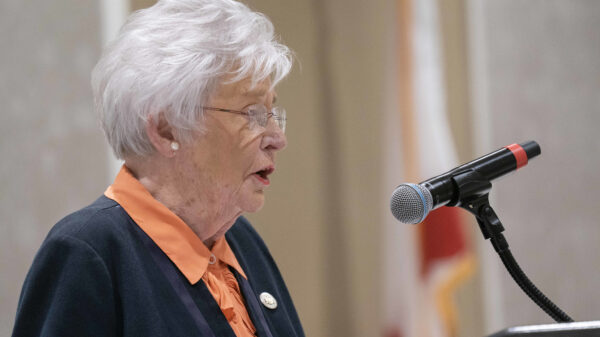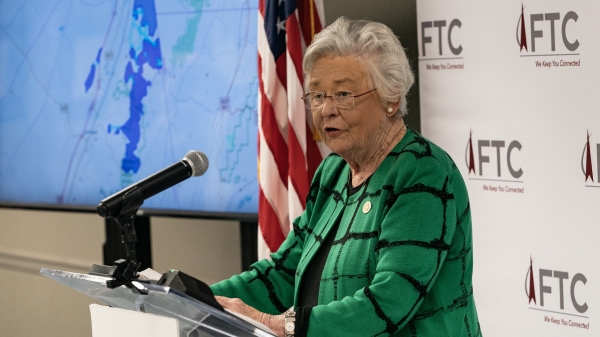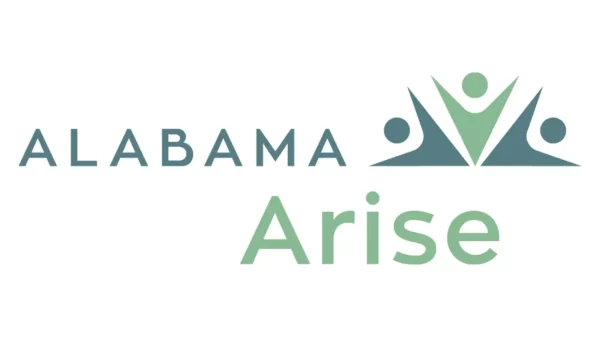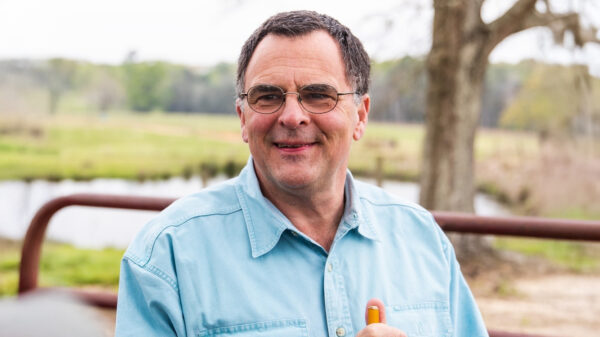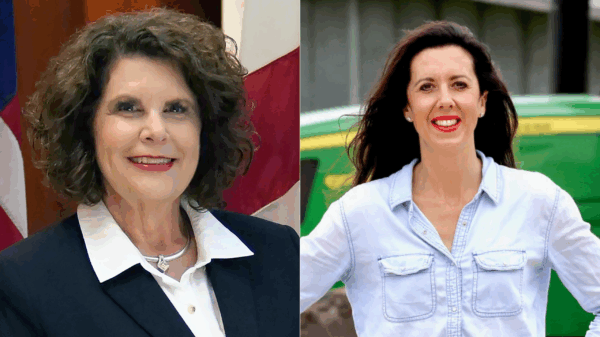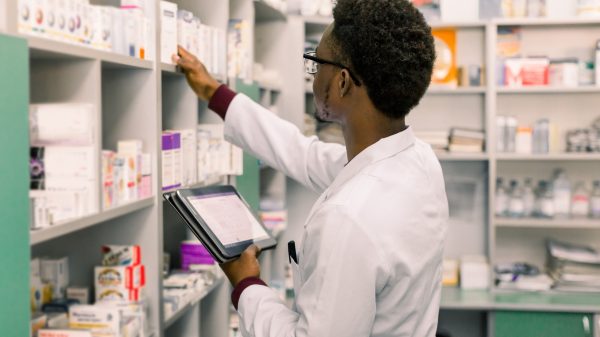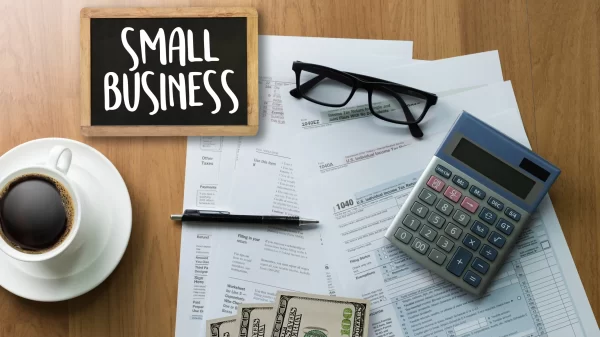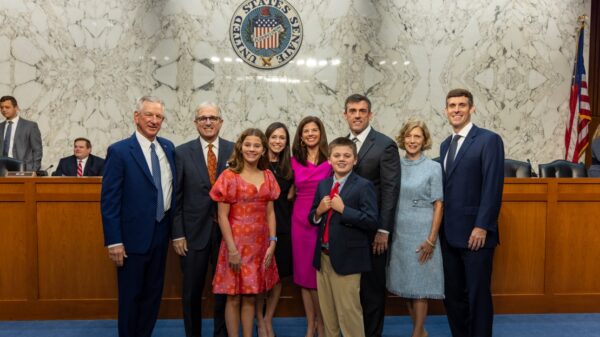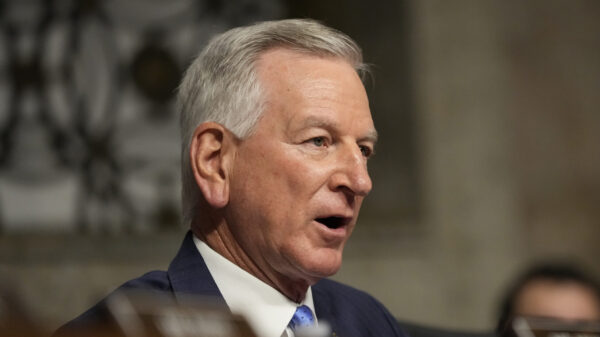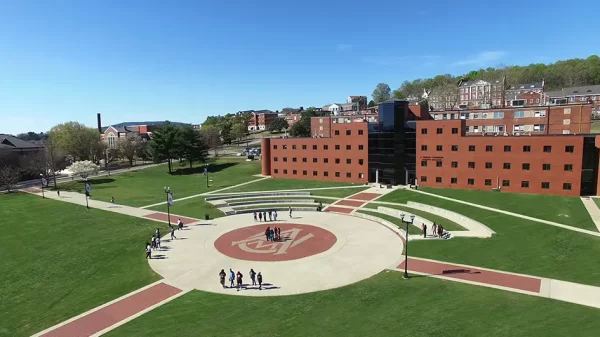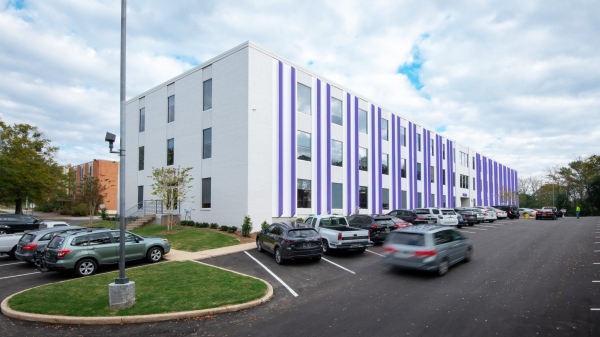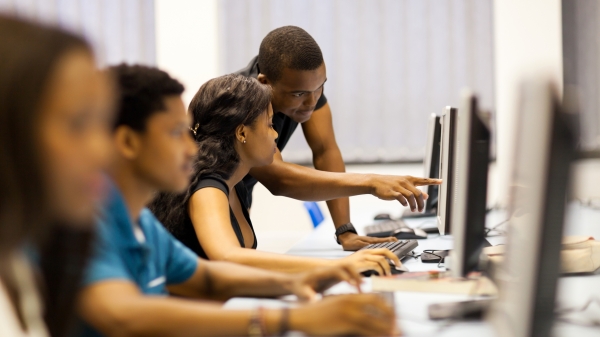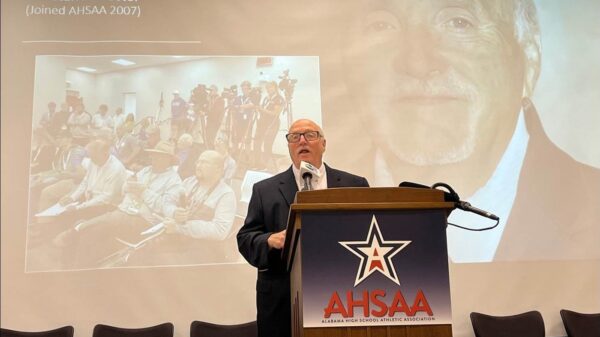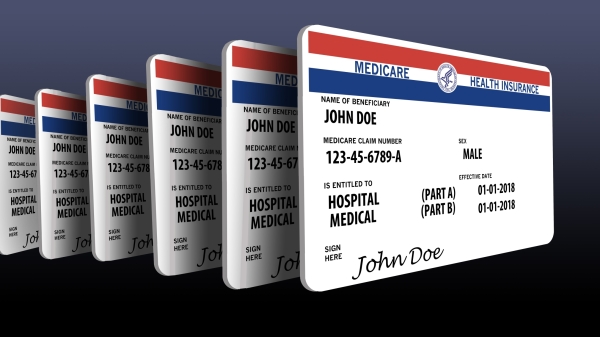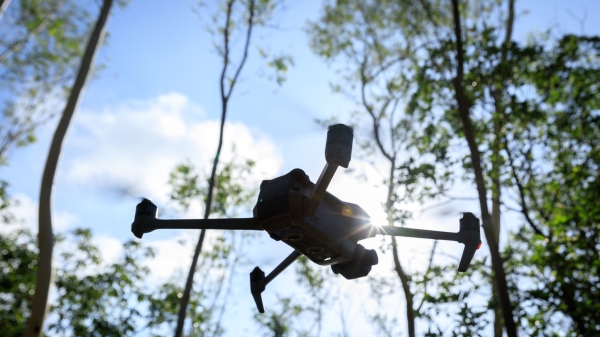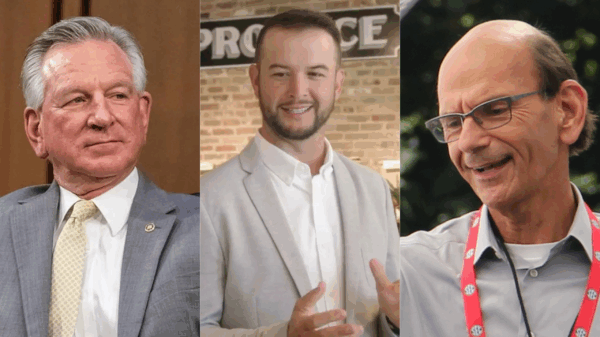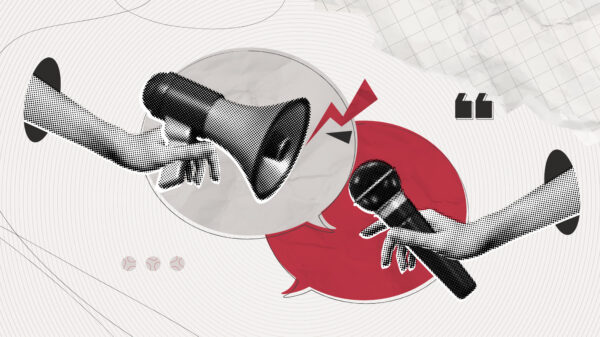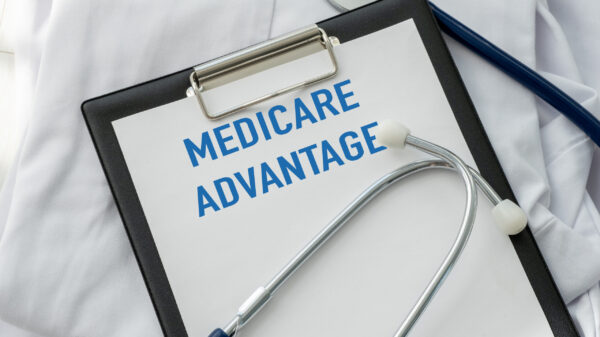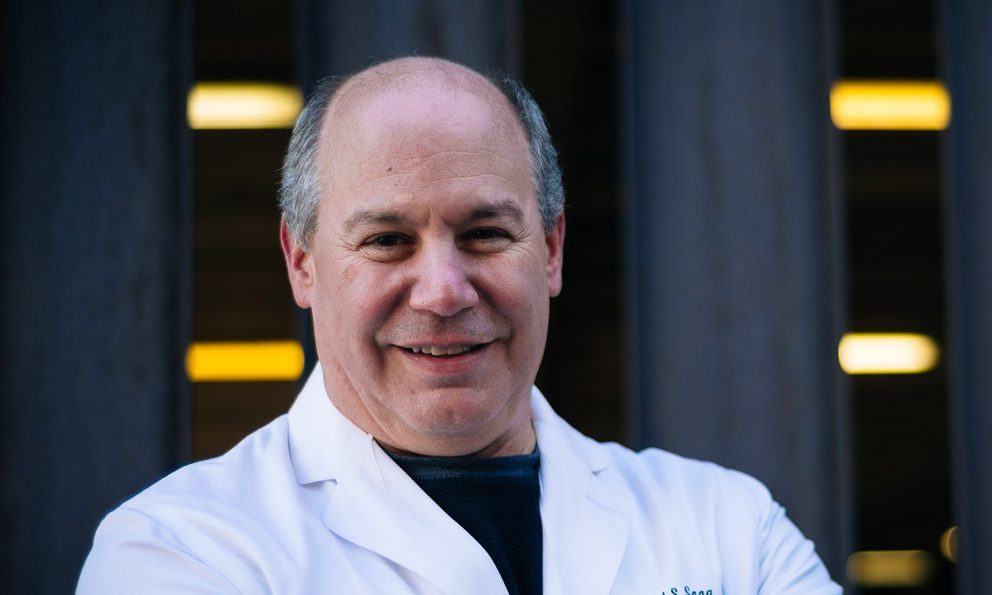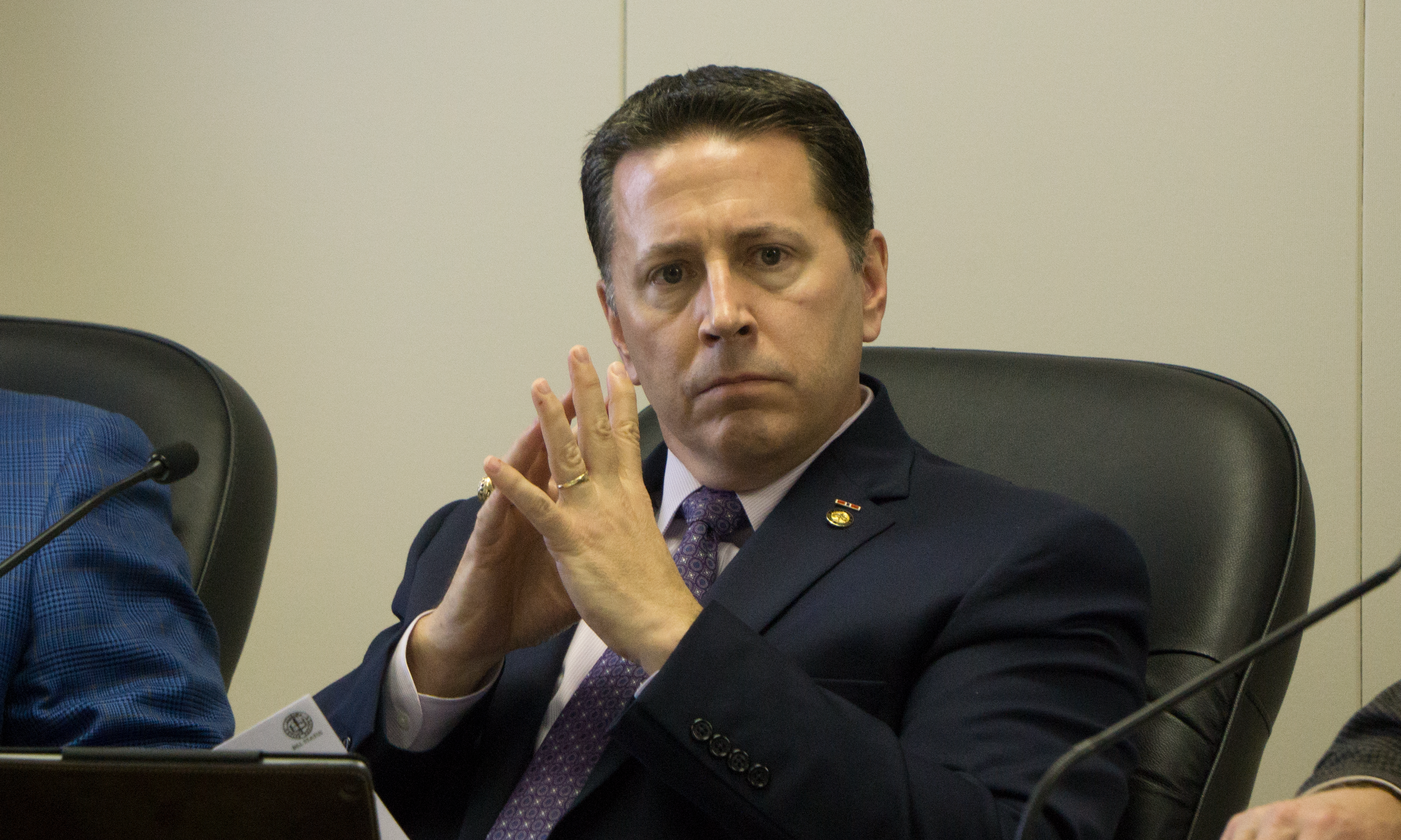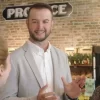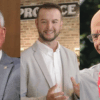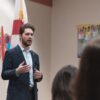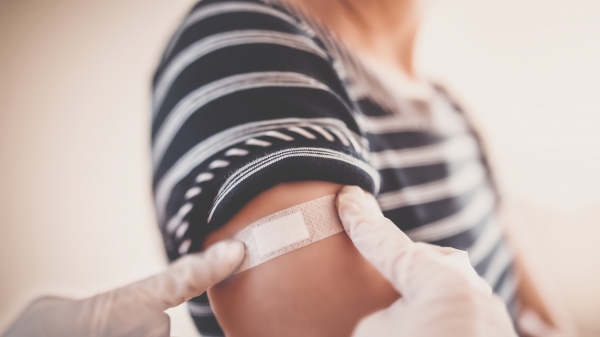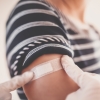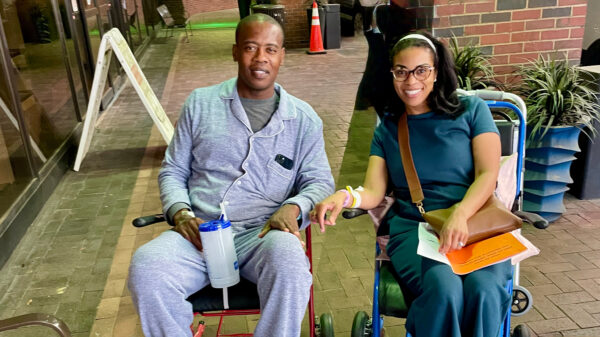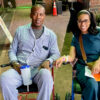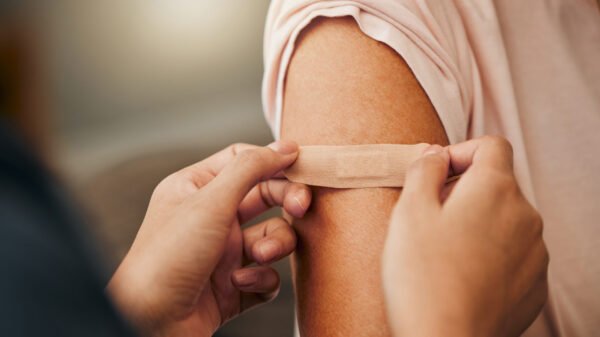Renowned infectious diseases expert Dr. Michael Saag, a professor and associate dean at UAB’s School of Medicine, said Tuesday that Gov. Kay Ivey’s new “safer-at-home” order is a moderate and cautious step forward — not toward normalcy but toward a new normal.
In an interview with APR, Saag praised Ivey for not fully lifting restrictions, giving in to pressure or going as far as neighboring states like Georgia that have moved more rapidly toward reopening their economies.
“She is trying to balance the competing needs of the business world and the public health world,” said Saag, who has been a pioneer in HIV research and on the front-lines fighting viruses across the world. “And it looks like she’s leaning more toward the public health space, which I think is totally appropriate. Because your business may or may not be able to survive. But if somebody dies from COVID, there’s no second chance. I think she gets it.”
The governor’s new order, which will go into effect on Thursday, April 30, at 5 p.m. after the current stay-at-home order expires, allows retail businesses to reopen at 50 percent capacity as long as social-distancing is maintained and stores are disinfected regularly and appropriately.
“My fellow Alabamians, let me be abundantly clear,” Ivey said. “The threat of COVID-19 is not over.”
[visual-link-preview encoded=”eyJ0eXBlIjoiaW50ZXJuYWwiLCJwb3N0Ijo4NzUyNiwicG9zdF9sYWJlbCI6IlBvc3QgODc1MjYgLSBSZWFkIEdvdi4gS2F5IEl2ZXkncyBzYWZlci1hdC1ob21lIG9yZGVyIGZvciB5b3Vyc2VsZiIsInVybCI6IiIsImltYWdlX2lkIjo4NjI0OSwiaW1hZ2VfdXJsIjoiaHR0cHM6Ly93d3cuYWxyZXBvcnRlci5jb20vd3AtY29udGVudC91cGxvYWRzLzIwMjAvMDQvQWRvYmVTdG9ja18zMzQyNTgwMzItc2NhbGVkLWUxNTg2NTYzODYxMzEwLTEwMDB4NjAwLmpwZWciLCJ0aXRsZSI6IlJlYWQgR292LiBLYXkgSXZleSdzIHNhZmVyLWF0LWhvbWUgb3JkZXIgZm9yIHlvdXJzZWxmIiwic3VtbWFyeSI6IllvdSBjYW4gcmVhZCB0aGUgZnVsbCBvcmRlciBhbmQgc2VlIGhvdyB0aGluZ3Mgd2lsbCBjaGFuZ2Ugb24gQXByaWwgMzAgaGVyZS4iLCJ0ZW1wbGF0ZSI6InVzZV9kZWZhdWx0X2Zyb21fc2V0dGluZ3MifQ==”]
Unlike other Southern states like Georgia, Tennessee and Texas, Gov. Kay Ivey is not allowing restaurants to reopen for dine-in service. Barbershops, nail salons, hair salons and tattoo parlors are also to remain closed. Hospitals will be allowed to resume elective procedures, a key component of most hospitals’ revenue stream, if safety precautions are in place.
“The greatest disservice, for the people who might be watching me today, is to think that by lifting the comprehensive health restrictions, this must be a sign that there’s no longer a threat of COVID-19,” Ivey said. “Folks, we must continue to be vigilant in our social distancing both today and for the foreseeable future.”
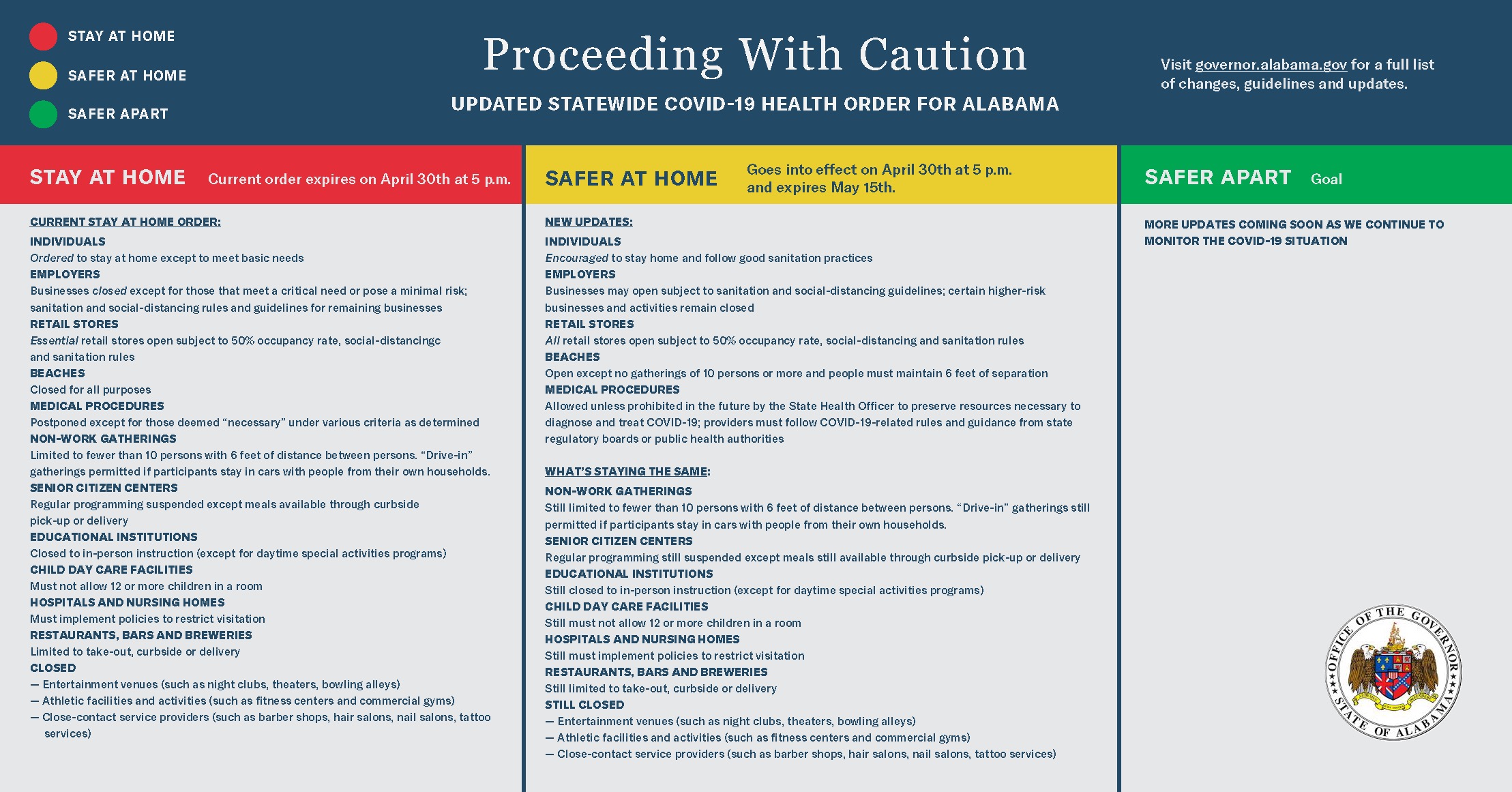
The “stay-at-home” order will expire April 30 at 5 p.m. and will be replaced by a “safer-at-home” order, highlighted under the yellow portion of this graphic.
As associate dean for global health, an infectious diseases specialist and the director of the Center for AIDS research at UAB, Saag has spent his career fighting HIV and other viruses across the world. In March, Saag was infected with the virus, one of the first health care workers in Alabama to test positive.
Saag said Ivey’s new “safer-at-home” order, which is similar to the order in place before the “stay-at-home” order issued on April 4, is a reasonable and cautious step.
“I don’t see anything here that says people should think about this as a return toward normalcy,” Saag said. “This is not normal, but it’s appropriate.”
But Saag said the threat from COVID-19 is not gone. A second wave could emerge, requiring the state to dial back the relaxed order if the situation changes. Alabama Department of Public Health chief Dr. Scott Harris said the same in an interview with APR Monday.
“I think we just try to do it gradually and respond,” Harris said. “And then if we have to dial back, we dial back. And if we are doing okay, we continue gradually easing restrictions.”
Saag said the public should be prepared for COVID-19 to be a dire public health concern for months, if not years. Until a vaccine can be developed, which will take at least a year, and possibly longer, the threat will remain.
“There’s hardship everywhere,” Saag said. “So we’re hoping that this is a short-lived experience that will be in our rearview mirror very soon. The reality that few of us have begun to comprehend is that it’s likely that this thing is going to be with us for many months to come. And facing that reality is demoralizing, but yet, I think, is a requirement for us to get through this.”
As states across the country begin to revise restrictions and move into economic recovery and virus containment, the country is embarking on a kind of giant social experiment, with different states trying different measures. Some, Saag said, are being more responsible. Others, he said, are moving recklessly, and the outcomes could have ripple effects for Alabama.
“And as part of this giant experiment, we’re going to have to monitor the outcomes very closely in the counties that border the states that, in my opinion, are being irresponsible,” Saag said. “Georgia, in particular, is worrisome.”
Already, Lee County, Chambers County and Tallapoosa County, areas in East Alabama near or along the Georgia border, have seen some of the highest rates of infection and death in Alabama. All three of those counties have per capita death and infection rates higher than Jefferson County.
{{CODE2}}
Georgia’s governor, Brian Kemp, was one of the first in the country to rapidly relax stay-at-home restrictions, just weeks after putting them in place and before meeting the White House’s gating criteria for a phased-in reopening. Kemp’s actions even drew criticism from the president, who said he had moved too quickly.
“Not only did Gov. Kemp ignore those guidelines, but he has also gone to an extreme of opening up many businesses, for which there is no chance at maintaining social distance,” Saag said. “So he’s created a petri dish for the virus to have a field day with. It’s wide open for the virus.”
Whether a spike in cases occurs in Georgia will depend on if people act upon their own individual concerns and avoid going out to restaurants, bars and other venues that are beginning to reopen in Georgia.
“If it turns out Gov. Kemp is correct, I suppose in retrospect, he will have done us all a favor,” Saag said. “On the other hand, if Georgia experiences an accelerated spike in cases, then he will have placed his entire population who elected him into office to protect their health and security at huge risk and basically will have failed to carry out the duties of his office.”
By comparison, Ivey, Saag said, seems to be erring on the side of caution.
“It seems to me that Gov. Ivey is in the camp of respecting the virus and respecting our relative lack of knowledge at this stage, and I applaud her for her cautious move forward,” Saag said, adding that Alabamians should not venture into Georgia just because they’ve lifted restrictions. “We’re dealing with an infectious disease. It’s pretty contagious. It’s contagious person to person, and it looks like it’s going to be somewhat contagious state to state.”
Back in Alabama, growth in the number of new cases is largely dependent on which county you’re in. Marshall and Mobile counties have seen rapid growth in the past few weeks, with Mobile seeing its cases spike higher than Jefferson County, despite having a smaller population and having tested fewer people.
{{CODE1}}
“In some ways, we have our own social experiment that’s already happened,” Saag said. “And the preliminary data indicate that what Jefferson County did worked, relative to the counties that were slow to respond. You know right away, it underscores the value of the study of public health, and the implementation of standard practices. So we’re going to see what happens next.”
Going forward, Saag urged Alabamians not to let their guard down. The future of the pandemic remains unknown. Testing remains limited, though Harris and the Alabama Department of Health said they are working hard to expand access to testing and some progress has been made.
“I can see a horrible case forward and I can see a good case going forward,” Saag said.
The horrible case is that people, like Saag, who have been infected and have demonstrated strong immune responses, turn out not to be protected against the virus for very long. Scientific research has not fully concluded how long immunity lasts.
“We could get sick again,” Saag said of that possibility. “That happens with certain RNA viruses [like the novel coronavirus]. We don’t know yet if that’s the case, but if it is the case, that’s the Rod Serling nightmare that not only is there no immunity for people who’ve had the infection, the hope for a vaccine becomes vanishingly small. And I don’t even want to ponder those outcomes.”
The good case is that immunity lasts a long time, or at least long enough. Acquired immunity is different for different viruses and for different people. For some viruses, like the flu, immunity — either through infection or through vaccines — wanes over time as antibodies disappear from your body.
“On the good side, immunity works,” Saag said. “People who have had the infection are relatively protected against the challenge and don’t get infected and don’t get sick again. The vaccine is developed over the next two years where it’s available to people. And the best case is that an antiviral drug is discovered that can shorten the course of illness and prevent people from getting so sick that they end up in an ICU and die. This latter scenario is possible.”
Q&A with Dr. Michael Saag
Chip: What is your initial response to Ivey’s new “safer-at-home” order?
Saag: I think it is, all things considered, pretty reasonable. I suspect she is trying to balance the competing needs of the business world and the public health world. And it looks like she’s leaning more toward the public health space, which I think is totally appropriate. Because your business may or may not be able to survive. But if somebody dies from COVID, there’s no second chance. And I think she gets it. And, you know, retail stores, we’ll see if people feel comfortable going to them. People are going to vote with their feet. I’ve said this over and over. You know we could open up even restaurants but I don’t think people would elect to go in there and sit at tables, even if they’re spaced apart, because there’s no way to do social distancing at a restaurant or a bar.
Chip: Does this mean that people should not stay at home anymore, just because the state has lifted some restrictions and is now saying you’re safer at home? Does that mean people should run out and start doing things and acting normally like they were before?
Saag: No. I don’t see that in this at all. What I see is the opening line. People are encouraged to stay at home and practice good sanitation procedures. That is the headline. And then, the subtext is, okay, retail stores can reopen with social distancing guidelines, but occupancy will be limited. The beaches I don’t quite understand because I don’t know how you control gatherings on a beach but assuming it’s not a crowded beach, that’s probably okay. But everything else remains, as far as I can tell it, pretty much the same. It looks pretty similar. So to answer your question, no, I don’t see anything here that says people should think about this as a return toward normalcy. This is not normal, but it’s appropriate.
Chip: Yeah, I guess I should have prefaced that question with saying I was being a little bit facetious. But that’s what a lot of people are gonna say: this is an indication that things are getting better and so we can go back out and act normal.
Saag: Just one other thing that’s important to mention, is this: Nobody knows exactly what the right thing to do is. We’ve never encountered this before. We’re extrapolating from past experience with other epidemics, our knowledge of virology and knowledge of the immune system, our early knowledge of the infectiousness of this virus and our clear knowledge of what it does to people, once they get infected. And so it’s a killer virus, literally. So, no matter what we do, we’re flying by the seat of our pants. And in many ways, what’s happening throughout the United States is a giant social experiment. Some states are going to extreme measures to get back to normal “rapidly,” and others are being more cautious and conservative and respectful of the virus and the limitations of our knowledge. It seems to me that Gov. Ivey is in the camp of respecting the virus and respecting our relative lack of knowledge at this stage, and I applaud her for her cautious move forward, which to me is totally appropriate.
Chip: In regard to this “social experiment,” looking at how different states are lifting different restrictions, the neighboring state to Alabama’s east, Georgia, seems to have taken probably the most extreme approach at trying to reopen immediately. What is the concern about this kind of that patchwork of different restrictions? We’ve seen in Lee County and Chambers County and Tallapoosa County — counties that are close to the outbreak in southwest Georgia — that that’s also kind of the epicenter of the outbreak in Alabama, too, or it has been at certain points in the course of the pandemic. Should people be concerned about other states lifting their restrictions and then coming to Alabama? Or people on the Georgia border going into Georgia to shop or eat at restaurants or whatever? What’s your read on that situation?
Saag: We’re dealing with an infectious disease. It’s pretty contagious. It’s contagious person to person, and it looks like it’s going to be somewhat contagious state to state. And as part of this giant experiment, we’re going to have to monitor the outcomes very closely in the counties that border the states that in my opinion are being irresponsible. Georgia, in particular, is worrisome. They are not even following the federal guidelines set forward by the Trump Administration, which require a clear downward turn in the incidence of new cases for at least 14 days before any change in stay at home orders are issued. Not only did Gov. Kemp ignore those guidelines, but he has also gone to an extreme of opening up many businesses, for which there is no chance at maintaining social distance. So he’s created a petri dish for the virus to have a field day with. It’s wide open for the virus. If it turns out Gov. Kemp is correct, I suppose in retrospect, he will have done us all a favor. On the other hand, if Georgia experiences an accelerated spike in cases, then he will have placed his entire population who elected him into office to protect their health and security, at huge risk, and basically will have failed to carry out his duties of office. To me, it is governance malpractice what he’s doing.
Chip: Going forward in Alabama, things seem to have slowed pretty significantly in Birmingham but then we have different areas of the state that are still seeing a quick acceleration of cases — Marshall County, Mobile County. From an epidemiological, containment perspective, how difficult is it going to be going forward to try to contain the virus in the different places in the state accelerating at different rates?
Saag: In some ways, we have our own social experiment that’s already happened. You mentioned some counties, like Jefferson that have demonstrated extreme foresight and implemented stay at home well before other counties. And the preliminary data indicate that what Jefferson County did worked, relative to the counties that were slow to respond. You know right away, it underscores the value of the study of public health, and the implementation of standard practices. So we’re gonna see what happens next. We’re going to have to manage the relative heterogeneity, for lack of a better word, from county to county responses. What I would hope would happen is that all the counties will look at each other’s experiences. And then we can hone in on a standard that can be applied more universally throughout the state. I sense that’s what the governor is doing in her cautiousness. And that is really a great thing for right now.
Chip: Going forward, there have been concerns from a lot of people that there’s the risk of the second wave. We don’t have a vaccine yet. We haven’t, by all indication, reached any kind of herd immunity. Hopefully, the safer-at-home restrictions will keep the rate of new infections flat. Nobody knows how this is going to turn out, but how should people read the risk going forward?
Saag: I think we should assume the virus is still here and will remain for the indefinite future. That future can be out to two years. The other thing I think we can assume is that the majority of the population will remain susceptible. So the virus has a place to go if we let our guard down. And taken together, this epidemic in the United States is going to continue for quite a while, despite our best hopes that it goes away. I can see a horrible case forward and I can see a good case going forward.
The horrible case is that people like myself, who have been infected and have demonstrated strong immune responses still are not protected against a second challenge [reinfection]. And we could get sick again. And that happens with certain RNA viruses [like the novel coronavirus]. We don’t know yet if that’s the case, but if it is the case, that’s the Rod Serling nightmare that not only is there no immunity for people who’ve had the infection, the hope for a vaccine becomes vanishingly small. And I don’t even want to ponder those outcomes.
On the good side, immunity works. People who have had the infection are relatively protected against the challenge and don’t get infected and don’t get sick again. The vaccine is developed over the next two years where it’s available to people. And the best case is that an antiviral drug is discovered that can shorten the course of illness and prevent people from getting so sick that they end up in an ICU and die. This latter scenario is possible. And we’ll find out in the next couple of months whether treatments are actually going to work, at least the ones that are currently in testing.
Chip: That’s a really good point.
Saag: The concluding comment I think that’s inherent in this is that the public is aware of this pandemic for sure, and the public feels its impact both medically but also economically. And there’s hardship everywhere. So we’re hoping that this is a short-lived experience that will be in our rearview mirror very soon. The reality that few of us have begun to comprehend is that it’s likely that this thing is going to be with us for many months to come. And facing that reality is demoralizing, but yet, I think, is a requirement for us to get through this.

